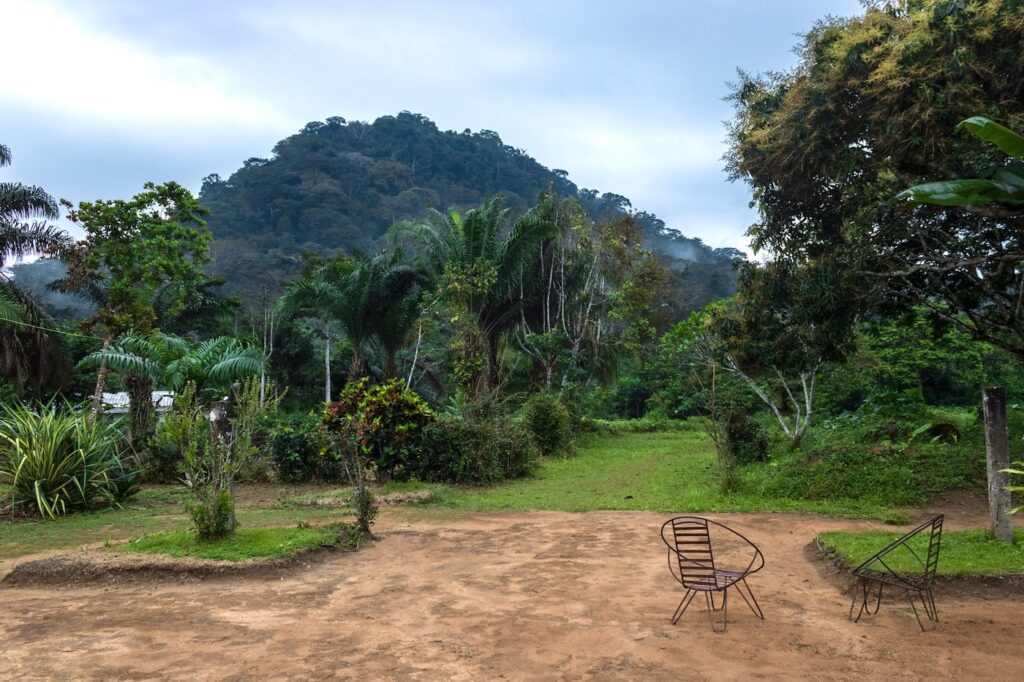ERL Gallery, Liverpool, United Kingdom
07 Feb 2025 - 31 Oct 2025

Yvon Ngassam, View of Mount Mbanga. Bikoka, Lolodorf, 2021. Courtesy the Artist and Bikoka Art Project.
Exhibition Research Lab (ERL) announces What the Mountain Has Seen, an exhibition curated by Dr Christine Eyene, Senior Lecturer in Contemporary Art at Liverpool John Moores University and Research Curator at Tate Liverpool. Building on new research into the memory of the land, botanical histories, and colonial legacies connecting Liverpool and Lolodorf (Cameroon), this project brings together archive material and contemporary artworks by the following British and Cameroonian artists: Shiraz Bayjoo, Joy Gregory, Yvon Ngassam, Jean David Nkot, Boris Nzebo, Freya Tewelde
The display retraces the presence of American missionaries who travelled to Cameroon in the late 19th and early 20th centuries on ships from the Liverpool-based African Steamship Company that became part of Elder Dempster. It also relates some of the practices of forced labour imposed by colonial administrators that resulted in various forms of vegetal, mineral, animal, and cultural extractions that benefitted Germany, France, the United States, Great Britain, and the city of Liverpool.
Exploring the impact of these histories in Cameroon today, Yvon Ngassam’s film Lolodorf: A Colonial Story (2022) weaves together oral history, myths, facts, and collective memory through voices of elders and youth from the rural town of Lolodorf. A selection from the installation Le chemin de fer (Underground Railroad) (2023) by Jean David Nkot associates the experience of forced labour in Cameroon with that of enslaved Africans working in cotton fields in America. The installation is centred on the emancipatory figure of Harriet Tubman and the Berlin Conference (1884-85) during which European colonial powers appropriated parts of the African continent. Ville Surprise (2010-11) by Boris Nzebo is a series of mixed media collages depicting human and plant resilience in the context of urbanisation in Cameroon’s economic capital, Douala.
Expanding on these narratives, Joy Gregory’s Invisible Life Force of Plants (2020) is a collection of cyanotype prints based on the artist’s research into Britain’s economic botany in the 17th-19th centuries against the backdrop of the transatlantic trade. Commissioned in 2023 with support from the British Council, Shiraz Bayjoo’s fabric-based installation Pu Travers Sa Dilo (2023) (‘To cross this water’,in Mauritian Creole) combines illustrations of European expeditions to East Africa, the swell of Indian Ocean, maroon forests, and indigenous trees. Paintings by Freya Tewelde from her Roots of Resonance: The Baobab Tree Project (2022-23) depict the deep connection between the baobab tree, cowhide, sound and vibration in the myth of the Abyssinian Negarit drum.
The title of the exhibition refers to the figure of Mount Mbanga – a natural landmark in Lolodorf, both present in colonial images and contemporary works – as a witness to the history of the land and its people across time. The research developed by Dr Eyene is unique in that it draws from histories and living memories of her family’s ancestral village in Cameroon to unveil overlooked chapters of Britain’s colonial history.
What the Mountain Has Seen is the research exhibition behind The Plant that Stowed Away, a display tracing the battle between nature and industrialisation in Liverpool and beyond, presenting works from Tate collections at Tate Liverpool + RIBA North from 6 February to 11 May 2025.